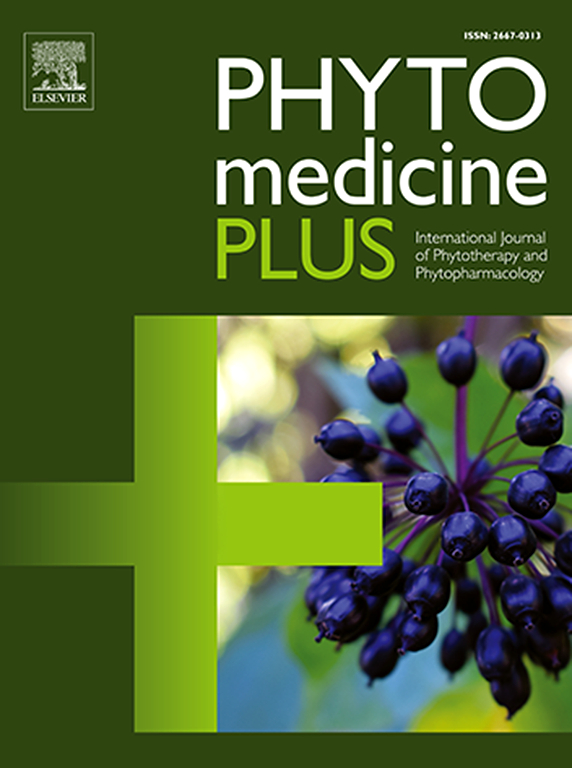Unveiling the socio-cultural practices of medicinal plants used by the ethnic community of Soliga tribes in Tamil Nadu, India
Q3 Pharmacology, Toxicology and Pharmaceutics
引用次数: 0
Abstract
Background and purpose
Plants have been integral to human health and cultural traditions for millennia, representing a vital relationship between tribal communities and their natural environment. The Soliga tribes have developed a profound relationship with the flora of their natural environment, utilizing various plant species in their socio-cultural practices. These practices are closely connected with their traditional knowledge, spirituality, and everyday life. This study aimed to document the socio-cultural practices associated with plant species and to identify the most culturally significant species used by the Soliga tribes in Anthiyur Taluk, Erode District, Tamil Nadu, India.
Methods
Ethnobotanical insights were collected through semi-structured interviews, group discussions, questionnaires, and field observations with knowledge holders. The collected data were analyzed using basic variables and ethnobotanical indices, whereas relationships and patterns within the dataset were explored through Pearson correlation and Principal component analysis (PCA).
Results
A total of 47 plant species from 25 families and 42 genera were identified as central to socio-cultural practices. Among these, Fabaceae, Apocynaceae, and Lamiaceae emerged as the predominant families. Achyranthes aspera L. was found to have the highest cultural importance index (CI) value of 0.98, followed by Cassia fistula L. and Lantana camara L. with CI values of 0.96 each. Ethnobotanical indices such as cultural importance index (CI), relative frequency of citation (RFC), relative importance index (RI) and cultural value index (CV) were applied, revealing significant positive correlations between basic variables and indices, such as CI and use reports (UR) (r = 0.82). Principal Component Analysis (PCA) further demonstrated that variables such as CI and RFC accounted for 60.24 % of the variance in the data.
Conclusions
The findings underscore the deep interconnection between Soliga tribes’ traditional knowledge and plant biodiversity, highlighting the urgency of preserving these cultural and ecological resources for future generations.

揭示了印度泰米尔纳德邦索利加部落社区使用药用植物的社会文化实践
背景和目的几千年来,植物一直是人类健康和文化传统的组成部分,代表了部落社区与其自然环境之间的重要关系。索利加部落与其自然环境中的植物群建立了深厚的关系,在其社会文化实践中利用了各种植物物种。这些做法与他们的传统知识、精神和日常生活密切相关。本研究旨在记录与植物物种相关的社会文化习俗,并确定印度泰米尔纳德邦罗德地区Anthiyur Taluk的Soliga部落使用的最具文化意义的物种。方法通过半结构化访谈、小组讨论、问卷调查和实地考察等方式收集民族植物学知识。利用基本变量和民族植物学指数对收集到的数据进行分析,并通过Pearson相关和主成分分析(PCA)探索数据集内部的关系和模式。结果共鉴定出社会文化活动中心植物47种,隶属于25科42属。其中,豆科、夹竹桃科和兰科成为优势科。牛膝的培养重要指数(CI)最高,为0.98,决明子次之,山楂叶次之,CI为0.96。采用文化重要性指数(CI)、相对被引频次(RFC)、相对重要性指数(RI)和文化价值指数(CV)等民族植物学指标,发现基本变量与CI、使用报告(UR)等指标之间存在显著正相关(r = 0.82)。主成分分析(PCA)进一步表明,CI和RFC等变量占数据方差的60.24%。研究结果强调了索利加部落的传统知识与植物生物多样性之间的深刻联系,强调了为后代保护这些文化和生态资源的紧迫性。
本文章由计算机程序翻译,如有差异,请以英文原文为准。
求助全文
约1分钟内获得全文
求助全文
来源期刊

Phytomedicine Plus
Medicine-Complementary and Alternative Medicine
CiteScore
3.70
自引率
0.00%
发文量
178
审稿时长
81 days
期刊介绍:
 求助内容:
求助内容: 应助结果提醒方式:
应助结果提醒方式:


